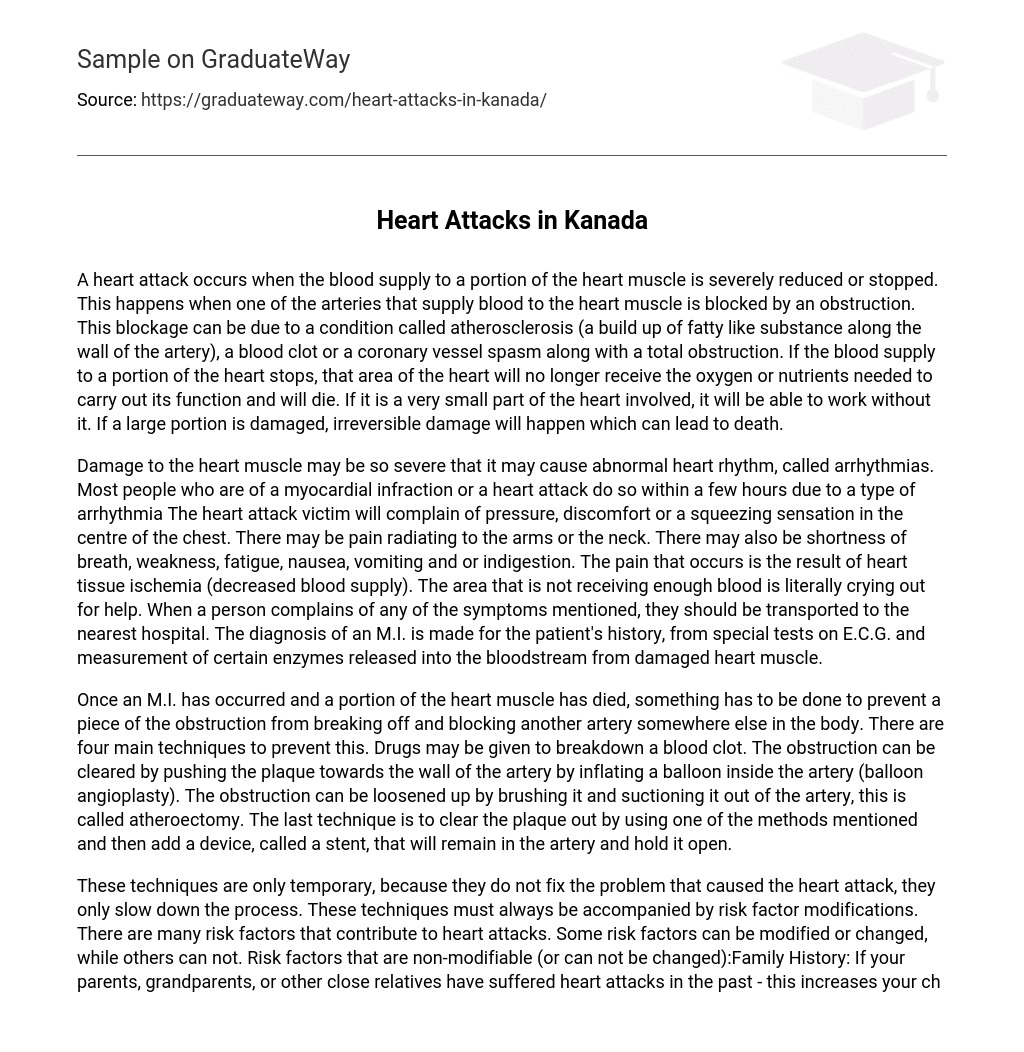A heart attack is caused by a severe reduction or blockage of blood flow to a section of the heart muscle. This can occur when substances like fatty build-up, a blood clot, or a coronary vessel spasm obstruct one of the arteries supplying blood to the heart. When this happens, the affected part of the heart loses its supply of oxygen and nutrients necessary for proper functioning and eventually dies. While a small area of the heart may still function if affected, significant damage to a large portion can lead to irreversible harm and potentially death.
Arrhythmias, which are abnormal heart rhythms, can be caused by severe damage to the heart muscle. In many cases, when a person has a heart attack or myocardial infarction, it is because an arrhythmia has occurred within a few hours. Symptoms of a heart attack consist of pressure, discomfort, or squeezing in the center of the chest that may also extend to the arms or neck. Other symptoms such as shortness of breath, weakness, fatigue, nausea, vomiting and indigestion may also be experienced. These symptoms arise because the heart tissue is not receiving sufficient blood supply and sends distress signals. If any of these symptoms are noticed in someone’s condition, immediate medical attention at the closest hospital is required. To diagnose a myocardial infarction doctors rely on the patient’s medical history along with special tests including an electrocardiogram (E.C.G.) and measurements of specific enzymes released into the bloodstream by the damaged heart muscle.
After a myocardial infarction (M.I.), it is necessary to take measures to prevent the formation of an embolus that could block another artery in the body. There are four main techniques used for this purpose. One method utilizes drugs to break down blood clots. Another option is balloon angioplasty, which involves inflating a balloon inside the artery to push plaque towards the arterial wall. Atheroectomy entails loosening and removing the obstruction through brushing and suction methods. Lastly, plaque clearance can be accomplished by combining any of these techniques with the insertion of a stent that keeps the artery open.
Although these techniques can only offer temporary relief and postpone the occurrence of a heart attack, they do not address the underlying cause. It is always advisable to incorporate risk factor modifications alongside these techniques. Heart attacks are triggered by various risk factors, some of which can be modified while others cannot. Non-modifiable risk factors include family history – if your parents, grandparents, or other close relatives have previously experienced heart attacks, it increases your likelihood of having one.
Male: Men have a higher likelihood of having heart attacks at a younger age compared to women. Nevertheless, after women go through menopause, their risk of heart attacks becomes equivalent to that of men.
As we age, the likelihood of having a heart attack increases.
Smoking cigarettes is a modifiable risk factor that can lead to an increased risk of a heart attack by narrowing blood vessels.
In order to prevent weight gain and the development of atherosclerosis, it is recommended that individuals decrease their fat and cholesterol intake while simultaneously increasing their consumption of dietary fiber.
High blood pressure, also referred to as hypertension, can lead to blood vessel damage due to the heart needing to work harder in pumping blood through narrow or hardened vessels affected by atherosclerosis. Ultimately, this can raise the risk of developing blood clots.
Engaging in regular physical activity is crucial for decreasing the likelihood of experiencing a heart attack as a result of inadequate movement.
It is important to maintain a healthy weight as obesity can arise from low physical activity and a high-fat diet.
Managing stress is crucial for everyone, regardless of whether it occurs in school, the workplace, or at home. Engaging in regular physical activity serves as an effective means to alleviate stress. Additionally, there exist alternative methods such as practicing relaxation techniques, indulging in a warm bath, or listening to calming music. The key lies in discovering a suitable approach and remaining committed to it.
Each year, around 53,000 people in Canada are hospitalized due to a heart attack, leading to approximately 26,000 deaths. Individuals who have experienced a heart attack are at higher risk of experiencing more episodes in the future. To improve long-term survival rates, it is essential to address these mentioned risk factors.





